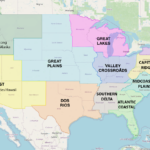The concept of branding can sometimes feel inauthentic. Branding is the process of establishing a public identity, and so often it comes off as being very sales-heavy. However, when brands are genuine and sincere, they feel less like an advertisement and more like a personality. Branding plays a huge part in professional relationships companies make with their customers. Though the process is nuanced, there are still some general guidelines to get the most out of your own brand.
Building a Business’ Brand
The truth is out: people want to engage with and buy from recognizable brands. A study published by Nielson found that 59% of consumers prefer to shop with brands they trust and know. Despite being from a company, many individuals will see a business’ brand as being like a friend. Branding works best when customers feel less like they’re being sold to, and more like they’re engaging with a pal. So, when developing your company’s brand, there are some important tips to keep top of mind.
- Know Your Brand’s Audience
The best brands understand their target market. They create messaging and social media posts that engage and inspire the individuals they want to speak to. Imagine if you were giving a speech at a convention. You’d undoubtedly want to tailor your presentation to be relevant to those in the audience. Perhaps they’re a group of dentists, and your business creates medical software for their billing and office needs. Even if your product can be used by any type of health provider, you’d want to illustrate how it works specifically for a dentistry firm. The same is true for any aspect of your brand: know your audience and learn how to speak to them.
- Understand Your Industry’s Trends and Set Yourself Apart
Whether you’re a small startup or a larger enterprise, your undoubtedly have competitors. It’s important to know what these companies are saying about their products, and how they’re developing their brand.
However, it’s not a great idea to simply mimic what they’re doing. For example, in 2017, the desert treat Moon Pie began a strange and befuddling journey into “weird Twitter.” Rather than posting company updates, the business’ social department began crafting beauties like this:
“I am a brand
B ringing all the fun
R ap music is actually really good
A llow me to explain why I like rap
N ow let’s listen to some rap
D ang that is some good rap.”
This kind of Tweets sparked major interest in the treat’s brand. However, it wasn’t long before other companies began jockeying their style and going for their own off-center humor. It certainly garnered attention, but it was more or less a pale comparison. Your business’ brand should be personal and well-defined; just because other companies are doing it doesn’t mean you need to as well.
- Don’t Underestimate a Logo
Brands have a big visual component as well. Though it may be tempting to simply choose a font and minor design, customers identify your business by your logo. The MIT Sloan Review performed a large-scale study on corporate visual branding and found some interesting takeaways. For one, they create a “point of connection.” That means when a customer sees your design, they instantly think of your company’s values and mission.
For example, the Nike swoosh logo suggests movement, activity, and flow. This is in-line with Nike’s brand and communicates their ideals without saying a word. Furthermore, the study found that separate visual logos were more effective than a jazzed up version of the company’s name. A logo should be a symbol that reflects your brand and what your want to communicate.
Developing a public brand takes time and careful consideration. However, the process is still rooted in a simple maxim: be yourself. When curating this public image, be sure to let the voice of the company and the people in it shine through. By understanding your audience, demonstrating your uniqueness, and giving thought to your logo, you’ll be on your way to creating a brand that resonates and informs.









